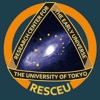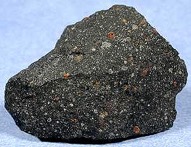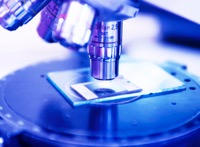Origin and diversity of planetary systems from the microscope to the telescope
February 20-23, 2017, Citadelle de Villefranche sur Mer (France)
PROGRAM ORGANIZERS PARTICIPANTS SOIRÉE![]()








The workshop will be held at la Citadelle de Villefranche Sur Mer near Nice in France (see venue).
Our understanding of planetary formation is currently going through a major transition from a static picture to a dynamic picture with planetary migration and dust/gas drift. On one hand, such a dynamic picture with a greater degree of freedom may allow us to solve long-standing questions about planetesimal formation, giant planet formation, delivery of water and organics to the terrestrial planets, planetary system diversity, and so on. The greater degree of freedom in planetary formation theories demands much more observational constraints on the other hand. Fortunately, new observational constraints are expected to come from both the solar system explorations and exoplanetary observations in coming years. While telescopic observations of exoplanetary systems will reveal both initial and final conditions of circumstellar systems (i.e., protoplanetary disks and planetary systems) before and after planetary formation, small-body missions in our solar system with in-situ characterizations, surface interactions (lander, impactor) and sample returns will provide direct information on detailed physical/chemical processes during planetary formation. In this symposium, we attempt to review recent ongoing and upcoming space missions and observations and recent progress in planet formation theories. Also we will discuss how we should synthesize these observational constraints to improve our understanding of planetary formation inside and outside the solar system. In particular, we cover remote-sensing observations of small bodies from a spacecraft or from ground-based observatories, microanalyses of samples from small bodies, observations of exoplanets from both space-based and ground-based telescopes, and planetary formation theories (from disk formation/evolution to current planetary system properties). We also look for opportunities for international exchanges of young scholars in this field of science.

Image copyrights: New England Meteoritical Services (Murchison Meteorite); ESA (Comet 67P/CG)
Program
TBC = Title to Be Confirmed
*** Monday 20th, February ***
09:00-09:40 Registration
09:40-09:50 Opening address [S. Sugita]
09:50-10:00 LOC announcement [P. Michel]
Session 1. Exoplanet Observation and Modeling
Chair: D. Ehrenreich
10:00-10:40 Magali Deleuil (Obs. Marseille)
Planetary systems from the perspective of transiting planets
10:40-11:00 Hajime Kawahara (U. Tokyo)
Transiting planets near and beyond the snow line
11:00-11:20 Masataka Aizawa (U. Tokyo)
Searching for exoplanetary rings via transit photometry
11:20-12:00 Bun’ei Sato (Tokyo Tech)
Doppler planet searches targeting small and large stars
Lunch+Poster Session
Chair: B. Sato
14:00-14:40 David Ehrenreich (Obs. Geneve)
Atmospheric escape of exoplanets
14:40-15:20 Giovanna Tinetti (U. College London)
Characterization of exoplanet atmospheres: Ariel & Twinkle (TBC)
15:20-15:40 Yui Kawashima (U. Tokyo)
Transmission spectrum models of exoplanet atmospheres with haze:
Effect of creation, growth, and settling of haze particles
Coffee Break (20m)
16:00-16:20 Kiyoe Kawauchi (TokyoTech)
Detailed atmospheric investigation of HD189733b with high-resolution transmission spectroscopy
16:20-17:00 Paolo Tanga (OCA)
Gaia mission (TBC)
*** Tuesday 21st, February ***
Session 2. Habitable Planets
Chair: H. Kawahara
09:00-09:40 François Forget (U. Paris 6)
Planetary habitability (TBC)
09:40-10:10 Takanori Kodama (U. Tokyo)
From aqua planet to land planet: Implication for inner edge of habitable zone
10:10-10:30 Akifumi Nakayama (U. Tokyo)
Roles of high-pressure ice in ocean planet climate
Coffee Break (20m)
10:50-11:10 A. Poro (IOTA Middle East)
The feasibility of life in moons of Jupiter-like planets in habitable zone
11:10-11:30 F. Montazeri (IOTA Middle East)
Habitability in binary stars planets with focus on LEBM model
11:30:12:00 Flash talks from Poster presenters (Gheibzadeh, Kanamaru, Miya, Ohno, Takarada)
Lunch + Poster Session
Session 3. Planetary System Formation and Evolution
Chair: M. Ikoma
14:00-14:40 Yann Alibert (U. Bern)
Planet population synthesis (TBC)
14:40-15:10 Masahiro Ogihara (NAOJ)
Migration and accretion of close-in super-Earths
15:10-15:30 Masahiro Ikoma (U. Tokyo)
Formation and evolution of polluted planetary envelopes
15:30-15:50 Yamila Miguel (OCA)
Jupiter’s interior and the Juno mission
Coffee Break (20m)
16:10-16:50 Makiko Nagasawa (Kurume Univ.)
Formation of hot-Jupiters and binary planets due to planet-planet scattering
16:50-17:10 Shoya Kamiaka (U. Tokyo)
Statistical analysis of spin-orbit angle in exoplanet systems applying asteroseismology
17:10-17:30 Yuhiko Aoyama (U. Tokyo)
Hydrogen line emission from accreting gas giants
20:30: Public Lecture (evening; see related Menu on the web site)
*** Wednesday 22nd, February ***
Session 4. Planetary accretion & Migration
Chair: Y. Alibert
09:00-09:40 Chao-Chin Yang (Lund Obs.)
Planetesimal formation (TBC)
09-40-10:00
Jean-François Gonzalez (Ecole Normale Supérieure)
Self-induced dust traps: overcoming planet formation barriers
10:00-10:20 Tristan Guillot (OCA)
The role of the ice-line in the formation of the first planetesimals
10:20-11:00 Alessandro Morbidelli (OCA)
Grain migration and planet accretion
Coffee Break (20m)
Session 5. Chemical and Dynamical evolution of small bodies
Chair: G. Libourel
11:20-12:00 Wataru Fujiya (Ibaraki U.)
Primitive meteorites with abundant water
12:00-12:40 Pierre Beck (Grenoble)
Infrared properties of primitive extra-terrestrial materials and their connections to small bodies
Lunch + Poster sessions
14:15-14:55 Tomoki Nakamura (Tohoku U.)
Hydration and dehydration of primitive asteroids inferred from mineralogical and compositional properties of carbonaceous chondrites
14:55-15:30 Hikaru Yabuta (Hiroshima U.)
Organic materials in the Solar System small bodies: Preservation and transportation of life's building blocks, and its potential application to volatiles on exoplanets
Coffee Break (20m)
Session 6. Small body missions: Hayabusa2, OSIRIS-Rex, and Rosetta
Chair: S. Sugita
15:50-16:30 Sei-ichiro Watanabe (Nagoya U.)
The Hayabusa2 Mission and Formation of Solar System
16:30-17:10 Patrick Michel (OCA), Dante Lauretta (U. Arizona)
The OSIRIS-REx Mission – Sample return from the asteroid Bennu
17:10-17:50 Cécile Engrand (U. Paris-Sud)
Cometary dust from the Rosetta mission and from Antarctic snow
17:50-18:10 Lydie Bonal (Grenoble)
Antarctic Micrometeorites vs. carbonaceous chondrites: the organic point of view
19:00-: Banquet at the restaurant Mayssa in Villefranche sur Mer.
*** Thursday 23rd, February ***
Session 7. Collisional process and evolution
Chair: P. Michel
09:30-10:10 G. Libourel (OCA)
Hyper-velocity impact experiments on metallic targets and implications on metallic asteroid histories
10:10-10:30 Eri Tatsumi (U. Tokyo)
Collisional history of asteroid Itokawa revealed by remote sensing and sample analyses obtained by Hayabusa mission
Coffee Break (20m)
Session 8. Future Missions and collaboration opportunities
Chair: P. Michel
10:50-11:20 Kazuo Yoshioka (U. Tokyo)
Planetary missions with Ultra-small satellite
11:20-11:50 Tomohiro Usui (ELSI)
Martian Moons eXploration (MMX) mission: Science goals and objectives
11:50-12:20 Masahiro Ikoma (U. Tokyo)
UV transit observation of exoplanet from space
12:20-12:50 Patrick Michel (OCA)
AIDA mission (ESA/NASA): Asteroid Binary investigation and deflection test
12:50-13:10 Closing address [S. Sugita]
-----------------
POSTERS
Mohammadsadegh Gheibzadeh (IOTA Middle East)
Scruting of viability of Iran extremophiles on the extraterrestrial habitable environments similar to Iran extreme environments
Masanori Kanamaru (Osaka U.)
Surface mechanical evolution of Itokawa
Kohei Miya (Osaka U.)
Isotopic analyses of presolar SiC by using an imaging TOF mass spectrometer (MULTUM-IMG)
Kazumasa Ohno (TokyoTech)
Microphysical modeling of dust clouds in GJ 1214b: Influence of atmospheric metallicity
Tetsuo Taki (NAOJ)
Growth of rocky dust particles at the radial pressure bump in protoplanetary disks
Takuya Takarada (Tokyo Tech)
Detection of three planets around two evolved stars
Scientific Organizing Committee:
S. Sugita (Univ. Tokyo)
P. Michel (Lagrange Lab, UCA, OCA, CNRS)
M. Ikoma (Univ. Tokyo)
Y. Alibert (Univ. Bern/PlanetS)
D. Ehrenreich (Univ. Geneva/PlanetS)
R. Jaumann (DLR)
D. Lauretta (Univ. of Arizona)
Y. Suto (Univ. Tokyo)
S. Watanabe (Nagoya U.)
Local Organizing Committee:
Guy Libourel (Lagrange Lab, UCA, OCA, CNRS); email: libou at oca.eu
Patrick Michel (Lagrange Lab, UCA, OCA, CNRS); email: michelp at oca.eu
List of registered participants
Aizawa, Masataka
Aoyama, Yuhiko
Beck, Pierre
Bonal, Lydie
Bruegger, Natacha
Carry, Benoît
Crida, Aurélien
Deleuil, Magali
Drazkowska, Joanna
Ehrenreich, David
Engrand, Cécile
Enya, Keigo
Eri, Tatsumi
Forget, François
Fujiya, Wataru
Gheibzadeh, Mohammadsadegh
Gonzalez, Jean-François
Guillot, Tristan
Ikoma, Masahiro
Jacobson, Seth
Kamiaka, Shoya
Kanamaru, Masanori
Kawahara, Hajime
Kawashima, Yui
Kawauchi, Kiyoe
Kazumasa, Ohno
Kodama, Takanori
Libourel, Guy
Méheut, Héloïse
Michel, Patrick
Miguel, Yamila
Montazeri Najafabadi, Fatemeh
Morbidelli, Alessandro
Nagasawa, Makiko
Nakamura, Tomoki
Nakayama, Akifumi
Noda, Hirotomo
Ogihara, Masahiro
Poro, Atila
Razavi, Marzieh Alsadat
Robert, Clément
Sato, Bunei
Senecal, Luc
Shoya, Kamiaka
Sugita, Seiji
Takarada, Takuya
Taki, Tetsuo
Tanga, Paolo
Tatsumi, Eri
Thiabaud, Amaury
Thuillet, Florian
Tinetti, Giovanna
Usui, Tomohiro
Watanabe, Sei-ichiro
Wieczorek, Mark
Yabuta, Hikaru
Yang, Chao-Chin
Yoshioka, Kazuo
Yuhiko, Aoyama
SOIRÉE GRAND PUBLIC
Où sont les planètes propices à la vie ?
par
Dr. François Forget
Directeur de Recherche au CNRS
LMD, Institut Pierre Simon Laplace, Université Paris 6
Mardi 21 Février 2017 à 20h30
Citadelle, Villefranche Sur Mer.






